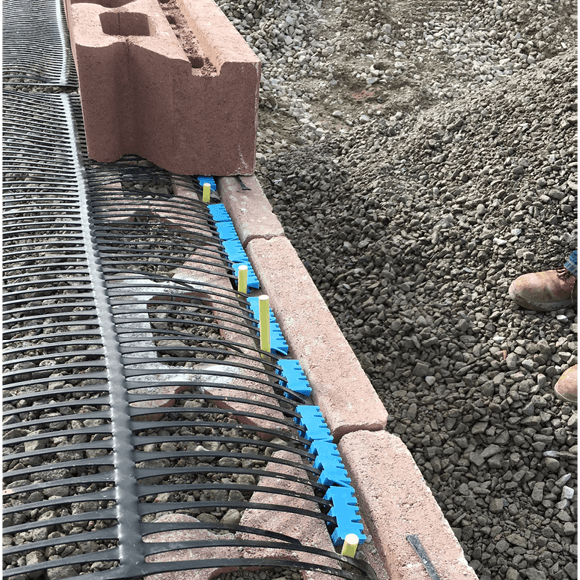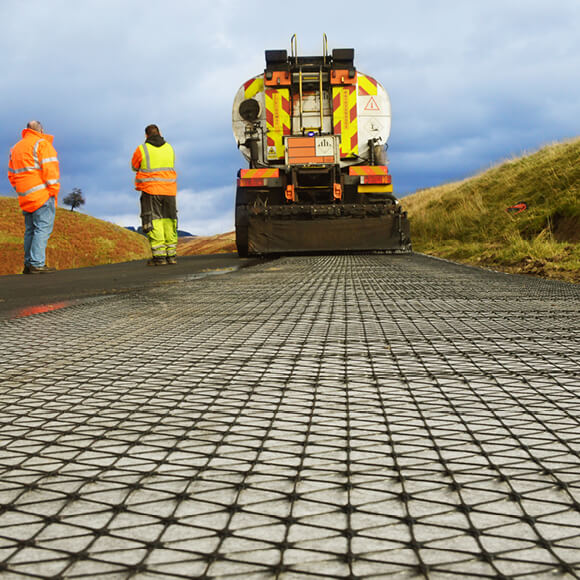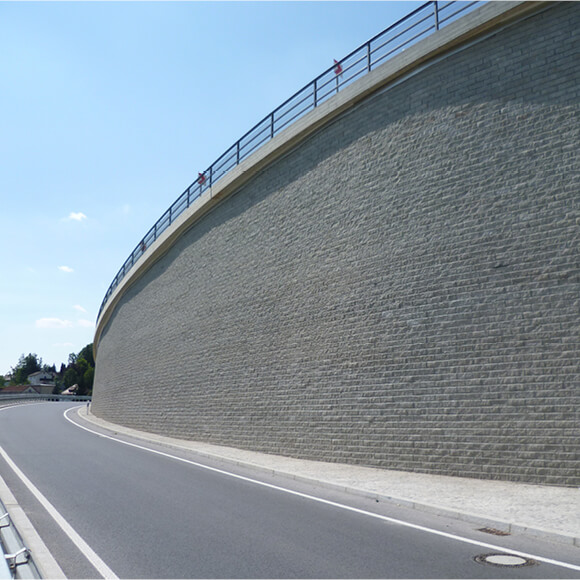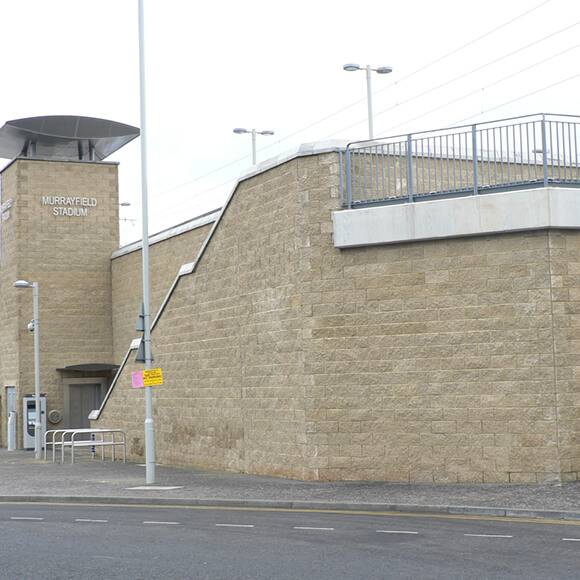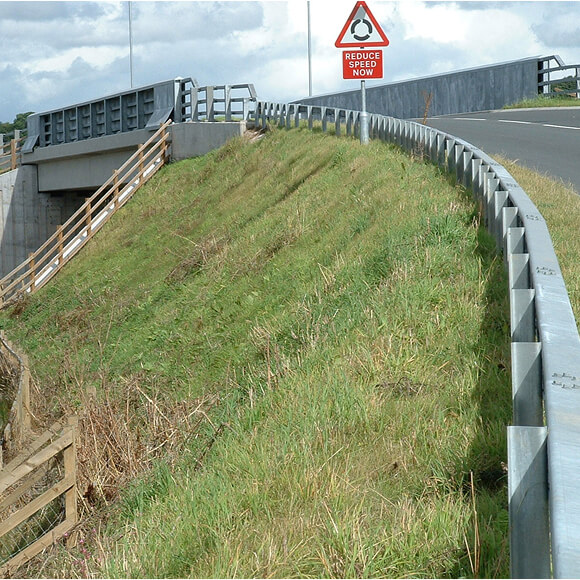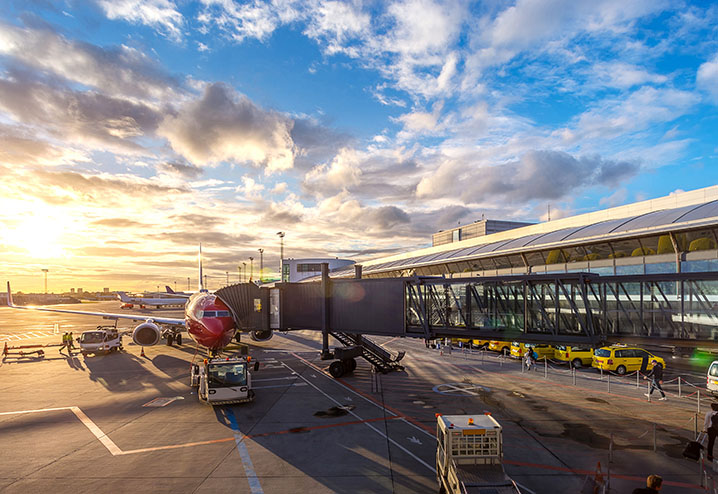
Airports
Achieve resilient infrastructure with long-lasting airport runway design
Airport runway design and runway construction encompasses extensive infrastructure that is expensive to construct and maintain. The construction and design of airports and runways must also continually evolve to meet changing stakeholder needs. On top of that the logistical and safety issues applicable to a live airport make maintenance a highly complex and costly process. Meeting these needs has required responsive changes in strategy, investment, and technology.
Airport owners and operators often find themselves in a never-ending maintenance and reconstruction process. A major factor is the large areas of pavements each airport must maintain to ensure uninterrupted operations. Compounding the issue, the most frequently used and heavily loaded pavements, like aprons and taxiways, often need the most work. The extensive network of ducting for services, pipework and drainage below these pavements creates highly variable foundation conditions that can lead to differential settlement problems. To learn more, take a look at our article on the importance of drainage. And when pavements have been constructed over very soft ground, an even greater challenge is created for long-term performance.
Tensar geogrids in a mechanically stabilised layer can strengthen pavements constructed over weak and variable subgrades and mitigate differential settlement, This design approach reduces the volume of aggregate needed, and shortens construction time, while extending service life to produce the potential for significant cost, and environmental benefits.
When dealing with existing cracked asphalt pavements or overlaying old concrete pavements, Tensar asphalt interlayer products can be incorporated into the asphalt overlay to greatly extend the life of the overlay. Upward cracking is delayed, improving the visual appearance and more importantly the performance of the surfacing.
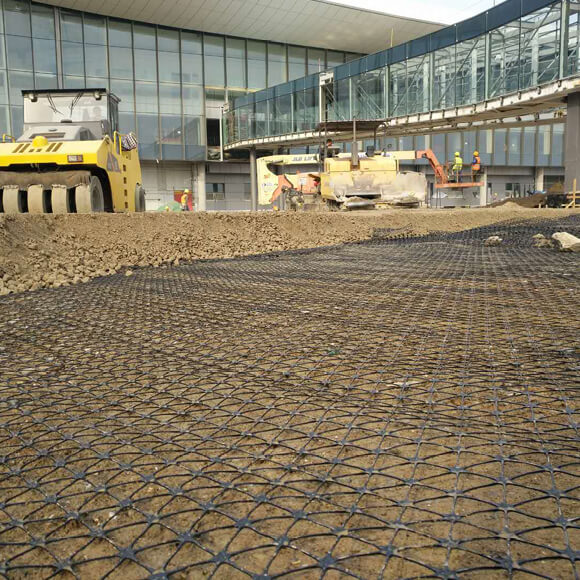
Pavement Construction
Airport runway construction shares many similarities with the construction of road networks. Airport owners and operators must select a type of pavement that meets the expected loads of aircraft traffic taking into account factors such as rideability, durability, friction, drainage and maintenance requirements. This involves considering various options such as rigid pavements, flexible pavements, and composite pavements.
Tensar geogrids, when incorporated into the airport runway design improve the performance of the airfield pavement by minimising aggregate movement within the pavement section and improving and maintaining stiffness. By creating a stiffer aggregate layer with geogrid stabilisation, pavements can be designed to deliver the same or better performance to fit budgets and loading requirements.
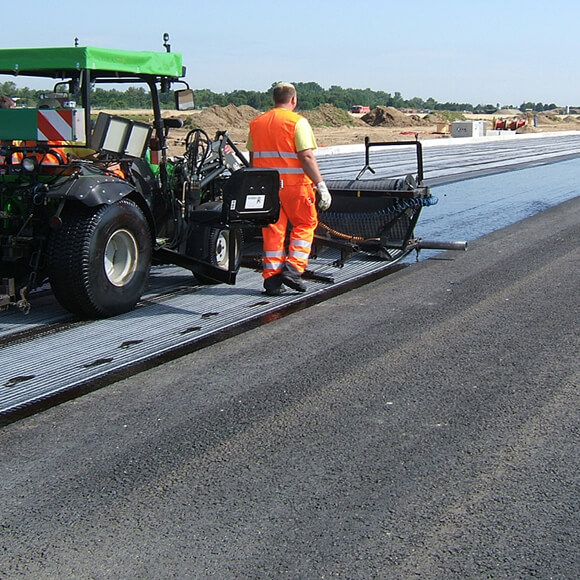
Pavement Maintenance
Conventional pavement maintenance strategies usually specify placing an asphalt overlay over the existing rigid or flexible pavement, or after milling of some of the existing asphalt surface. The thickness of applied overlay will determine the period before existing cracks again reflect upward to the surface. Although some additional service life is gained, it is only ever a temporary fix. Incorporating a Tensar interlayer product below the overlay is proven to dramatically increase the life of overlays by preventing or delaying the onset of reflective cracking.

Walls and Steep Slopes
Since not all airports are built on level flat land, retaining wall or steepened slope solutions may be necessary, especially for airports in mountainous terrains or marine areas. Conventional solutions, including reinforced concrete walls and sheet piling, can be costly, difficult to stage and time-consuming to construct. Tensar offers single-source wall and slope systems that offer cost and time saving advantages over alternatives. Steepened slopes can have a naturally vegetated facing to improve visual and environmental impact.
Environmental berms can be effective in shielding areas from the sound of ground level airport operations. Steep-sided naturally vegetated berms can be constructed using site-won materials and with minimal land-take when designed as a Tensar mechanically stabilised earth structure.
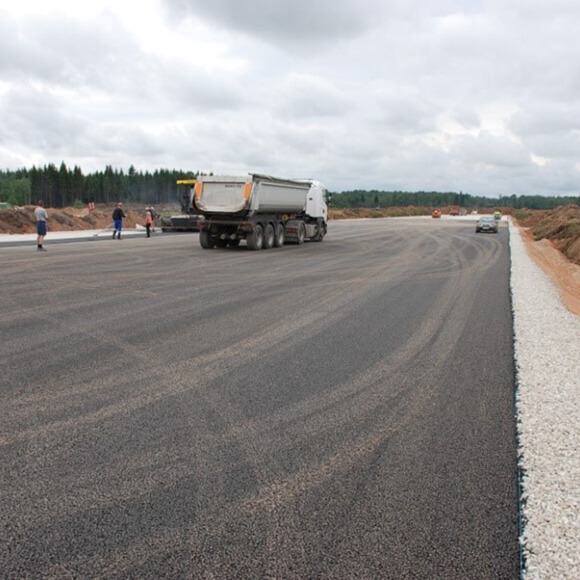
Weak soil problems
Pavement performance relies on what’s below the surface. Frequent heavy aircraft and vehicular traffic loading can cause accelerated deterioration of pavements, with rutting in both the base layer and the subgrade. Tensar geogrids can improve the long-term performance of airport pavements and service roads by minimising deformations and maintaining strength values.
With such large areas under pavement, the subgrade soil can vary greatly. The large number of service ducts, pipelines and drainage installed below pavement level also gives rise to variability in foundation conditions. Subgrade variability continues during service life due to changes in rainfall intensity and frequency. Designing with Tensar geogrid to stabilise the aggregate layers in a pavement helps mitigate the effects of subgrade variability, reducing differential settlement and enabling more economical pavement design.
Where airport pavements are constructed on embankments over weak soils the embankment foundation can be strengthened by use of Tensar systems for embankment support. Tensar has developed systems to create stiffened platforms that distribute loads more efficiently over weak soils, increasing their effective bearing capacity and decreasing differential settlement. This offers foundations with enhanced structural integrity, shorter construction schedules and lower project costs.






